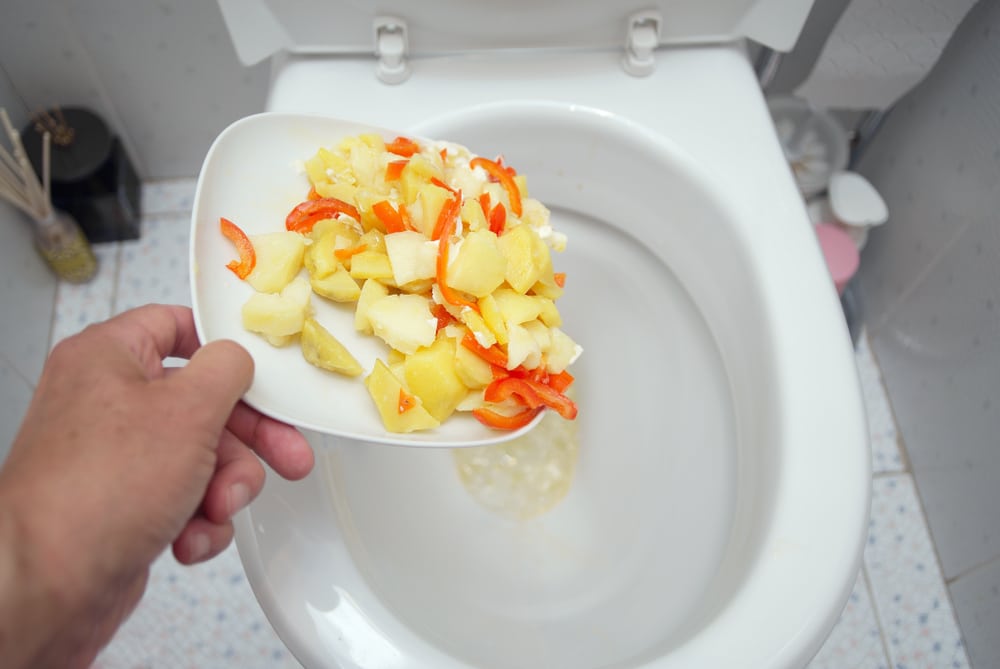How do you really feel in relation to Is it safe to flush food (especially rice) down the toilet??

Introduction
Many people are commonly confronted with the problem of what to do with food waste, particularly when it pertains to leftovers or scraps. One typical concern that occurs is whether it's okay to purge food down the bathroom. In this write-up, we'll delve into the reasons why people may think about flushing food, the consequences of doing so, and alternate methods for appropriate disposal.
Reasons people might consider purging food
Lack of understanding
Some individuals might not know the possible damage caused by purging food down the commode. They may wrongly believe that it's a safe practice.
Ease
Flushing food down the commode may feel like a quick and simple solution to taking care of unwanted scraps, particularly when there's no nearby trash bin offered.
Laziness
In many cases, people may merely choose to flush food out of large negligence, without thinking about the consequences of their actions.
Consequences of flushing food down the toilet
Environmental influence
Food waste that ends up in waterways can add to contamination and injury marine ecological communities. Furthermore, the water used to purge food can strain water sources.
Plumbing concerns
Flushing food can lead to blocked pipes and drains, creating expensive plumbing repair services and aggravations.
Sorts of food that should not be flushed
Coarse foods
Foods with coarse textures such as celery or corn husks can get entangled in pipes and create obstructions.
Starchy foods
Starchy foods like pasta and rice can soak up water and swell, bring about clogs in pipes.
Oils and fats
Greasy foods like bacon or cooking oils need to never ever be purged down the commode as they can strengthen and cause obstructions.
Proper disposal approaches for food waste
Utilizing a waste disposal unit
For homes geared up with garbage disposals, food scraps can be ground up and flushed through the plumbing system. Nevertheless, not all foods are suitable for disposal in this way.
Recycling
Specific food product packaging products can be recycled, minimizing waste and decreasing ecological influence.
Composting
Composting is an environmentally friendly method to throw away food waste. Organic products can be composted and made use of to enrich dirt for gardening.
The relevance of appropriate waste monitoring
Reducing ecological harm
Appropriate waste monitoring methods, such as composting and recycling, assistance minimize pollution and maintain natural resources for future generations.
Safeguarding plumbing systems
By staying clear of the method of flushing food down the commode, property owners can stop pricey plumbing fixings and maintain the stability of their pipes systems.
Verdict
To conclude, while it may be appealing to purge food down the bathroom for ease, it is very important to comprehend the prospective repercussions of this activity. By adopting proper waste administration practices and throwing away food waste sensibly, individuals can add to healthier pipes systems and a cleaner atmosphere for all.
5 REASONS WHY YOU SHOULDN’T FLUSH FOOD DOWN THE TOILET
THE PIPES AREN’T DESIGNED FOR FOOD
Most pipes are not designed to run from your toilet to your major sewer and toilets are not designed to deal with food scraps to begin with. Because of this, food can easily block these pipes and create a backlog of raw sewage that can snow back into your home or apartment.
SOME FOOD CAN BLOCK SEWER LINES
Two of the most popular food substances that end up in sewage systems are fats and oils when cooking oil butter or bacon fat cools it solidifies, and this congeals on the inside of your sewer line initially it will constrict the flow of sewage and eventually stop it completely. Hardening cooking fats are causing extensive damage to sewers all around the country, forming fatbergs that can affect your entire District.
OTHER FOODS DEGRADE TOO SLOWLY
Foods such as apple cores corn on the cobs and animal bones take ages to decompose and if you flush this food down your toilet, it’ll take a miracle to avoid blocking it never mind the fact if it works its way through the sewage system it’s just going to end up as more fodder for the giant fatberg that’s hiding down there
MANY FOODS ABSORB WATER
Other foods such as oats and rice are very water absorbent and just swell up when they come into contact with it. So, flushing a bowl of oatmeal may seem innocent, but it’ll quickly clog up your sewer line.
SEWAGE MAINTENANCE IS COSTLY
Nobody likes taxes. It’s going to cause your District additional expenses by flushing food down into the sewage systems because this is going to cause massive disruption to your city’s wastewater processes. The cost of maintaining these systems is rising annually.
WHAT TO DO WITH YOUR LEFTOVERS INSTEAD OF FLUSHING THEM?
Some leftovers can easily be frozen or refrigerated to use at a later date, there are hundreds of different ways to repurpose leftover food If you have some smelly liquid-based food or cooking pots, you can pour them back into an old can and reseal it or get a leakproof plastic bag fill it and then just toss it back into the trash this will keep the smell nicely sealed away Virtually 100% of food waste can become composite. You can ask anyone near your locality if they have a composting program. Separate the scraps that can be used for this purpose and you can create your own pile if you have the space Now it’s time to tackle the number one reason people’s flush food scraps, they smell. The easiest solution to get to work around these is to put them in a plastic bag and freeze them. When trash day comes around just popped them into your bin and take it down to the curbside. https://dohertyplumbing.net/5-reasons-why-you-shouldnt-flush-food-down-the-toilet/

As a devoted person who reads on What Can Happen If You Flush Food Down the Toilet?, I assumed sharing that editorial was a good idea. Loved our blog posting? Please quickly share it. Let others check it out. Bless you for being here. Kindly check our blog back soon.
Call Today